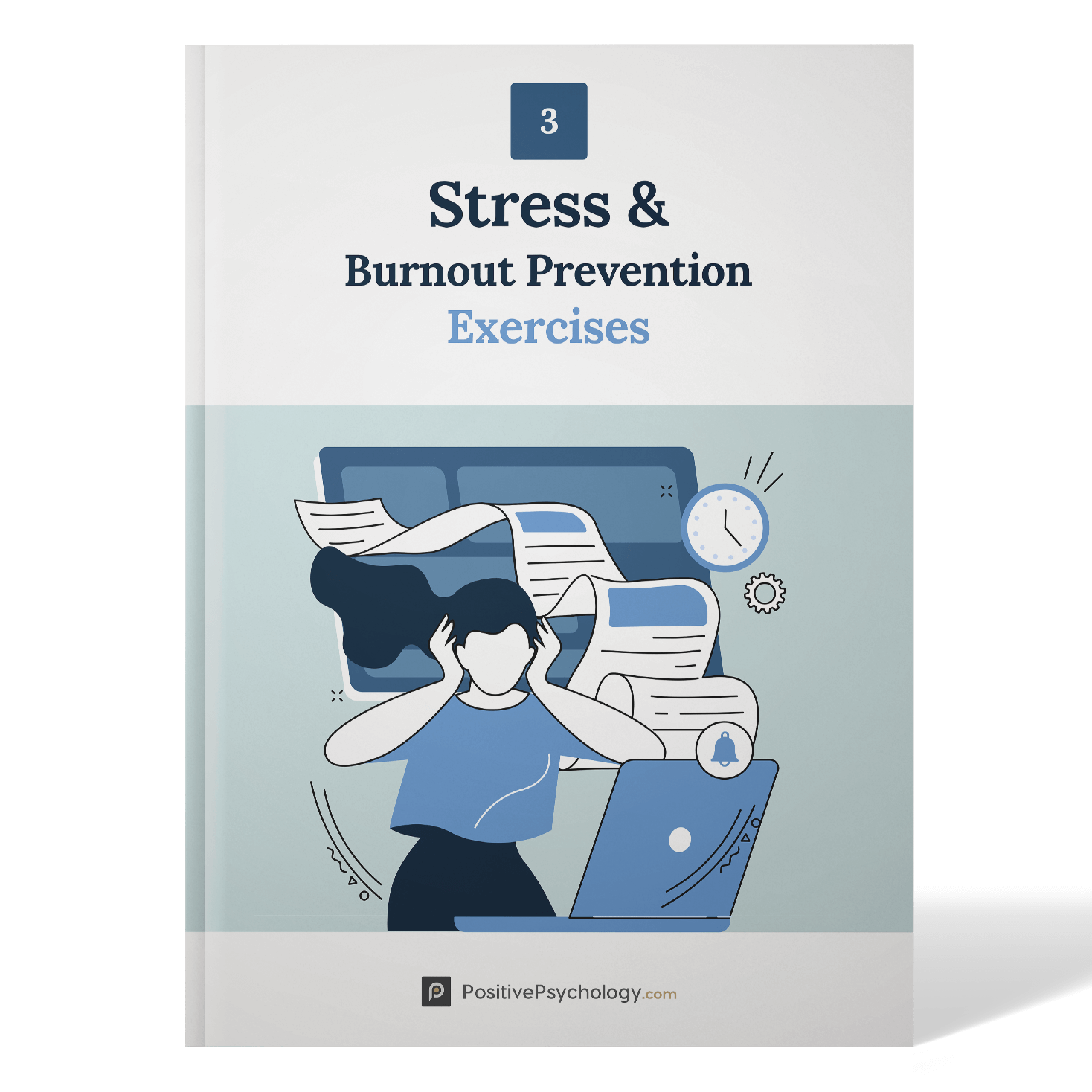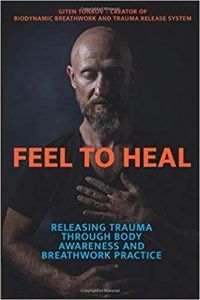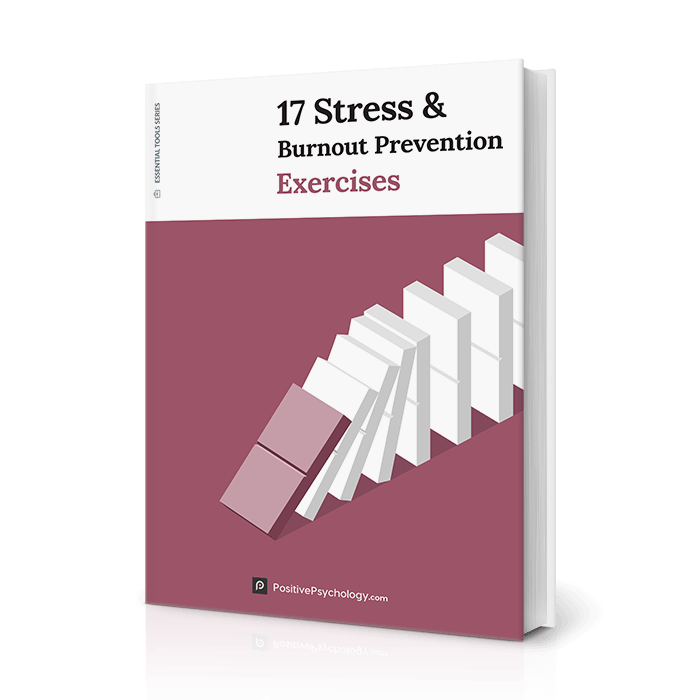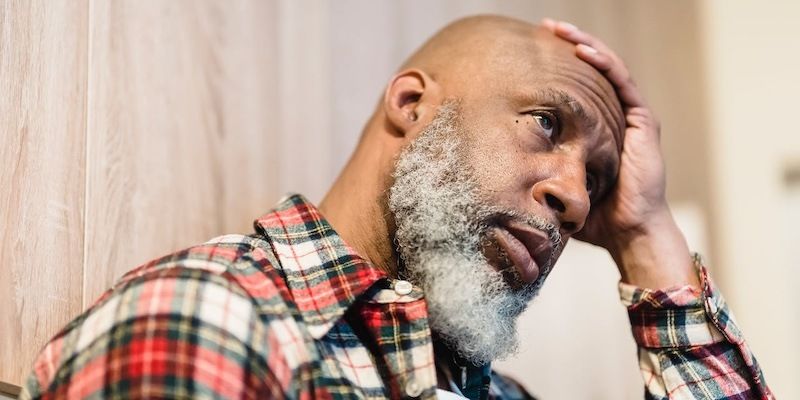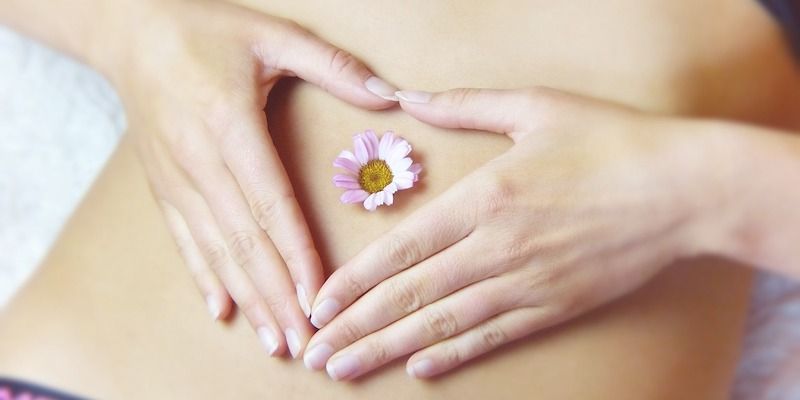12+ Breathing Exercises for Managing Anxiety (Incl. PDF)
 Breathing is more than a physical requirement to live.
Breathing is more than a physical requirement to live.
It is also foundational to spiritual, mental, and emotional aspects of life.
Hindus call it prana, Chinese refer to it as chi, and Christians believe in the Holy Spirit, which breathes in them. The breath has been essential to Zen Buddhist and yogic traditions. The word “spirit” is derived from the Latin spiritus, which means “breath” or “breath of life” (Lee & Speier, 1996).
Today, the breath remains a powerful tool that can improve mental, physical, and emotional wellbeing. Perhaps the most powerful aspect of the breath is that it is readily available to most of us at any given time. Let us show you how to use this powerful tool to manage stress and anxiety with a selection of breathing exercises.
Before you continue, we thought you might like to download our three Stress & Burnout Prevention Exercises (PDF) for free. These science-based exercises will equip you and your clients with tools to manage stress better and find a healthier balance in your life.
This Article Contains:
Why Are Breathing Exercises Important?
Breathing, while seemingly simple, is a complex process involving the lungs, diaphragm, and intercostal muscles. There are numerous physical, mental, and emotional benefits that breathing exercises provide.
4 Benefits of breathing exercises
1. Decreased levels of stress and anxiety
Nearly all forms of breathing exercises have the potential to decrease stress and anxiety by acting on the autonomic nervous system and vagus nerve (Kreibig, 2010).
The physiological effect of deepening the breath and lengthening the exhale shifts the nervous system from sympathetic to parasympathetic function (Jerath, Edry, Barnes, & Hearth, 2016).
This shift gets us out of “fight-or-flight” mode and can help with both cognitive and physiological aspects of anxiety.
2. Deeper levels of relaxation
Breathing exercises and progressive muscle relaxation provide immediate states of relaxation and have lasting physiological benefits to the nervous system (Toussaint et al., 2021).
The relaxation of muscle tension can additionally improve sleep, restfulness, and quality of life throughout the day (Toussaint et al., 2021).
3. Improved physical health
Specific aspects of physical health are impacted by the breath. Breathwork can help with asthma and chronic obstructive pulmonary disease (COPD), and improve respiratory and pulmonary function (Srivastava & Singhal, 2005).
With improvements in lung function and enhanced respiratory capability, other aspects of physical health, such as activity and movement, can become easier and more enjoyable. More physical health benefits are discussed below.
4. Enhanced cognition
Deep breathing and holotropic breathwork have been found to improve mental focus and cognitive function. The effects of breathwork on the nervous system improve brain function by altering neural activity, decreasing parasympathetic activity, and improving the ability to focus (Sharma et al., 2014).
Are breathing exercises good?
Breathing is a necessary part of life. The best part of using the breath to improve health is that it is completely natural and there are no side effects. It is also a resource that is readily available to nearly all of us.
Breathing exercises are convenient because they can be practiced anytime, anywhere, and without any equipment.
3 Proven health benefits
Scientific evidence supports the use of breathwork for a multitude of health benefits. As mentioned above, the relaxation response triggered by conscious breathing techniques normalizes the autonomic nervous system and counteracts the automatic fight-or-flight response from real or perceived stressors (Kreibig, 2010).
Because of this powerful effect on the nervous system, breathwork can offer the following benefits.
1. Decrease blood pressure and improve cardio-respiratory function
Controlled studies have demonstrated beneficial respiratory effects for people with asthma and, among healthy individuals, improved pulmonary function after practicing pranayama (Srivastava & Singhal, 2005).
2. Potentially help with weight loss
The Japanese “Senobi” breathing technique has been used to help with weight loss and metabolic function (Sato, Kawamura, & Yamagiwa, 2010).
3. Improve sleep
As a relaxation technique, breathing exercises can help improve sleep in the short term as well as provide long-lasting effects on sleep hygiene. The activation of the autonomic nervous system affects the endocrine system, releasing hormones to regulate sleep and wake cycles (Jerath et al., 2016).
Better sleep, in turn, can help improve nearly every other area of physical and mental health.
3 Types of Breathing Exercises

Most fall into these categories of breathing exercises.
Deep relaxation breathing
Deep relaxation breathing (DRB) is also known as diaphragmatic breathing, relaxation breathing, or abdominal breathing. It involves inhaling deeply to expand the diaphragm and follows with a slow exhale (Consolo, Fusner, & Staib, 2008).
Diaphragmatic breathing is used across health disciplines such as nursing, dentistry, medicine, and public health because of the mental and physical benefits it provides patients (Consolo et al., 2008).
DRB includes taking slow, even, deep breaths where the belly expands. This is in contrast to shallow or chest breathing, where only the top of the chest moves during inhalation and exhalation.
Most people only use one third of their lung capacity during normal chest breathing, which limits the ability to take in and use oxygen and tap into the relaxation response (Consolo et al., 2008). Timed breathing techniques such as square breathing or 4-7-8 breathing are types of DRB.
Holotropic breathwork
Holotropic breathwork is a combination of overbreathing and evocative music that leads clients to a non-ordinary state of consciousness (Grof, 2014).
During altered states, breathers often report experiencing the body in a different way (such as temperature, tingling sensations, or muscle release). Grof (2014) describes four categories of this non-ordinary consciousness that can be accessed through holotropic breathwork. These include sensory, biographical, perinatal, and transpersonal.
- Sensory experiences are those described above dealing with altered physical sensations.
- Biographical experiences include memories, beliefs, and emotions connected to the past.
- Perinatal experiences refer to those that are similar to experiences related to birth (being held or nurtured).
- Transpersonal experiences are those that are “beyond the ego” or beyond our personal identity in present space and time (Taylor, 1994).
Holotropic breathwork is not appropriate for all clients, such as those with asthma, recent surgeries, or individuals who experience hallucinations or unstable moods. The goal of this form of breathwork is to break through psychological problems and heal mentally and emotionally.
Japanese breathing exercise
The Japanese breathing exercise known as the “Senobi” breathing method entails movement and breath. Participants raise their hands until they feel tired – a type of stretch customary in ancient Japan. The “Senobi” technique involves keeping the hands, arms, and shoulders upright as firmly as possible, stretching the muscles of the back and neck (Sato et al., 2010).
This breathing technique has been studied and used as a weight-loss option for obese individuals and those who cannot take part in rigorous activity (Sato et al., 2010). It provides a simple alternative that requires no money and very little time and space.
The theory supporting this is that performing “Senobi” breathing creates an increase in skin temperature in the erector spinae, activating brown fat cells, which are an important part of fat combustion (Mattson, 2010).
Research shows that “Senobi” breathing exercises can be effective weight loss methods, regulating the autonomic nervous system and hormone secretion. Specifically, when 40 premenopausal women aged 40 to 50 took part in a one-month intervention involving this breathing technique three times a week, obese women lost a significant amount of body fat, but normal-weight women did not (Sato et al., 2010).
10 Best Breathing Exercises to Try
It is ideal to practice breathing exercises when calm and then implement them during times of stress. Select a regular time each day to spend 5 or 10 minutes focusing on breathwork.
3 Exercises for relaxation, anxiety, and stress
- Pursed-lip breathing is a great technique to relieve stress and anxiety, but it is also helpful for people with asthma or COPD (Srivastava & Singhal, 2005). It helps get the diaphragm working and increases the amount of oxygen entering the body. To do this exercise, simply breathe in slowly through the nose and breathe out through the mouth with pursed lips (as if sucking through a straw). Make the breath out approximately twice as long as the breath in.
- Box breathing is also known as square breathing. It has been shown to reduce stress and boost focus and concentration (Sharma et al., 2014). This exercise involves breathing in through the nose for a count of four, holding the breath for a count of four, breathing out slowly for a count of four, and then holding for another count of four, essentially making a “square” or “box” with the breath.
- 4-7-8 breathing is especially helpful for falling asleep (Arizona Center for Integrative Medicine, 2010). Focusing on the breath and counting can distract the mind from worry and ruminating thoughts. This technique involves breathing in through the nose for a count of four, holding the breath for a count of seven, and exhaling through the lips for a count of eight (handout provided below).
Box breathing relaxation technique: how to calm feelings of stress
3 Exercises for managing panic attacks
Panic attacks can be unpredictable and scary events for individuals who struggle with anxiety. Up to 11% of Americans experience panic attacks each year, and 2–3% develop full-blown panic disorder (Cleveland Clinic, 2020).
The symptoms are physical and can be debilitating. While Cognitive-Behavioral Therapy and medication can be effective treatments for panic (Cleveland Clinic, 2020), there are some simple and immediate exercises people can do to reduce stress and manage the attacks.
1. Progressive muscle relaxation (PMR)
PMR is a technique that involves actively contracting muscles to create tension and then progressively releasing them throughout the body. The technique was developed by Edmund Jacobson in the 1920s using the principles of neural top-down and bottom-up processing, and it provides relatively quick relief from tension and anxiety (Keptner, Fitzgibbon, & O’Sullivan, 2020).
2. Inhale lavender
Research has demonstrated that inhaling the smell of lavender essential oils significantly reduced anxiety in a short period of time (Donelli, Antonelli, Bellinazi, Gensini, & Firenzuoli, 2019). Lavender was the preferred anxiety-reducing scent in this research, but other essential oils can provide similar calming effects based on preference.
Simply open the bottle of oil and slowly inhale the scent through the nose and breath out through the mouth.
3. Try the 5–4–3–2–1 exercise
This exercise involves looking at five objects, listening for four sounds, touching three objects, identifying two smells, and naming one thing you can taste. It brings you into the present moment and can help distract the mind from panic.
1 Mindfulness meditation and 3 yoga exercises
- Mindful breathing is an excellent remedy for stress, anxiety, high blood pressure, and even depression (Taylor, 1994). Mindful breathing is incredibly simple but surprisingly difficult to do.
The idea is to focus awareness simply on the breath and, as the mind wanders, gently bring awareness back to the breath, allowing thoughts to pass without judgment.
- Breathing is an integral part of yoga and is referred to as pranayama. It is foundational to any yoga practice, and adding movement and physical postures to the breath can bring about an incredible potential to heal.
There is extensive research that suggests yoga can improve biochemical and physiological markers of stress and anxiety, as well as self-reported improvements in mental and emotional regulation (Li & Goldsmith, 2012). Specific breathing techniques that are often practiced in yoga include the following:
-
- Lion’s breath stretches muscles in the face and can help relieve stress and tension (Li & Goldsmith, 2012). Breathe in deeply through the nose and then breathe out forcefully with the mouth open and wide, sticking the tongue out and rolling the eyes upward. It may feel strange, but it stretches facial and neck muscles and can release gripping in the jaw.
- Alternate nostril breath evens out breathing and helps to slow down the breath. It is best to do this technique while sitting in a comfortable position.
- This is a simple handout that outlines basic yogic breathing. The concept involves awareness and control of breathing, as well as pairing the breath with movement or postures.
4 Helpful Books and Handouts
For additional resources, we have found a bestseller, as well as a book on healing, and include two interesting PDFs as well.
1. Breath: The New Science of a Lost Art – James Nestor
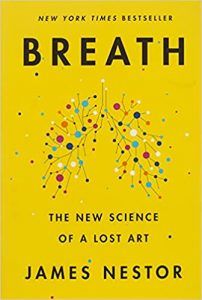
Nestor provides evidence of how our society has lost the ability to breathe correctly and teaches the reader the importance of focusing more on the foundational aspect of breathing.
Find the book on Amazon.
2. Feel to Heal: Releasing Trauma Through Body Awareness and Breathwork Practice – Giten Tonkov
Giten Tonkov provides an approach to healing trauma and living well in a multi-modal practice that is simple enough for anyone to access.
This book offers insight into the therapeutic benefits of using breath and mindfulness to improve wellbeing.
Find the book on Amazon.
3. Breathing Exercises – UC Berkeley
This handout from UC Berkeley provides a few reminders to breathe throughout the day and outlines step-by-step guides for some simple breathing exercises.
4. 4-7-8 Breath Relaxation Exercise – Dr. Andrew Weil
The 4-7-8 breathing technique is explained in this handout by Dr. Andrew Weil. This breathing technique is helpful for panic, anxiety, and stress (Arizona Center for Integrative Medicine, 2010).
Resources From PositivePsychology.com
Triangle breathing is an alternate variation of the square or box breathing discussed above. This handout provides a step-by-step guide to practicing it.
This anchor breathing handout provides a picture that can help individuals learn mindful breathing.
As part of the PositivePsychology.com Toolkit©, our progressive muscle relaxation script discusses the benefits of the activity and guides individuals through an entire session. The script guides clients to systematically tense and relax specific body parts, starting at the feet and moving up the body to the head. The resource can be used in session or given to clients as homework.
Another resource in our toolkit is the Breathing Together exercise. It can be found under the Mindfulness category of positive psychology exercises. This breathing exercise is meant to be done with couples or groups, with clients sitting facing each other, at first with eyes closed and then with them open, to connect through the rhythm of the breath. It can be both a relaxing and connecting experience.
A resource that can also be very useful, is this article where we suggest 20 anxiety tools with which to help your clients cope.
If you’re looking for more science-based ways to help others manage stress without spending hours on research and session prep, this collection contains 17 validated stress management tools for practitioners. Use them to help others identify signs of burnout and create more balance in their lives.
A Take-Home Message
Breathing is essential for life and so automatic that most of us take it for granted. However, the power of the breath cannot be overstated. It has the ability to help us heal mentally, physically, and emotionally and can improve many aspects of life if we take the time to pay attention to it.
From better sleep to improved cardiovascular function and mental clarity, practicing breathing exercises can have an amazing capacity to enhance many aspects of health and quality of life. So the next time you take an inhale, pause. Slow it down. Mindfully appreciate the exhale. The power to improve your life is inside you already.
We hope you enjoyed reading this article. Don’t forget to download our three Stress & Burnout Prevention Exercises (PDF) for free.
- Arizona Center for Integrative Medicine. (2010, February). 4-7-8 Breath relaxation exercise. Retrieved from https://www.cordem.org/globalassets/files/academic-assembly/2017-aa/handouts/day-three/biofeedback-exercises-for-stress-2—fernances-j.pdf
- Cleveland Clinic. (2020, August 12). Panic disorder. Retrieved October, 2021, from https://my.clevelandclinic.org/health/diseases/4451-panic-disorder
- Consolo, K., Fusner, S. & Staib, S. (2008). Effects of diaphragmatic breathing on stress levels of nursing students. Teaching & Learning in Nursing, 3(2), 67–71.
- Donelli, D., Antonelli, M., Bellinazi, C., Gensini, F. & Firenzuoli, F. (2019). Effects of lavender on anxiety: A systematic review and meta analysis. Phytomedicine, 65, 95–112.
- Grof, S. (2014). Holotropic breathwork: A new experiential method of psychotherapy and self-exploration. Journal of Transpersonal Research, 6, 7–24.
- Jerath, R., Edry, J., Barnes, V. & Hearth, V. (2016). Physiology of long pranayamic breathing: Neural respiratory elements may provide a mechanism that explains how slow deep breathing shifts the autonomic nervous system. Medical Hypotheses, 67, 566–571.
- Keptner, K., Fitzgibbon, C., & O’Sullivan, J. (2020). Effectiveness of anxiety reduction interventions on test anxiety: A comparison of four techniques incorporating sensory modulation. British Journal of Occupational Therapy, 70(6), 1–9.
- Kreibig, S. D. (2010). Autonomic nervous system activity in emotion: A review. Biological Psychology, 84, 394–421.
- Lee, K. K., & Speier, P. L. (1996). Breathwork: Theory and technique. In B. Scotton, A. Chinen, & J. Battista (Eds.), Textbook of transpersonal psychiatry and psychology. Basic Books.
- Li, W., & Goldsmith, C. W. (2012). The effects of yoga on anxiety and stress. Alternative Medicine Review, 17(1), 21–35.
- Mattson, M. (2010). Perspective: Does brown fat protect against diseases of aging? Aging Research Review, 9, 69–76.
- Nestor, J. (2020). Breath: The new science of a lost art. Riverhead Books.
- Sato, K., Kawamura, T., & Yamagiwa, S. (2010). The “Senobi” breathing exercise is recommended as first line treatment for obesity. Biomedical Research, 31, 259–262.
- Sharma, V., Rajajeyakumar, M., Velkumary, S., Subramanian, S., Bhavanani, A., Madanmohan, A., & Thangavel, D. (2014). Effect of fast and slow pranayama practice on cognitive functions in healthy volunteers. Journal of Clinical Diagnostic Resources, 8, 10–30.
- Srivastava, S., & Singhal, A. (2005). Influence of alternate nostril breathing on cardiorespiratory & autonomic function in healthy young adults. Indian Journal of Physiological Pharmacology, 49(6), 475–483.
- Taylor, K. (1994). The breathwork experience: Exploration and healing in non ordinary states of consciousness. Hanford Mead.
- Tonkov, G. (2019). Feel to heal: Releasing trauma through body awareness and breathwork practice. Author.
- Toussaint, L., Nguyen, Q., Roettger, C., Dixon, K., Offenbacher, M., Kohls, N., … Fuschia, S. (2021). Effectiveness of progressive muscle relaxation, deep breathing and guided imagery in promoting psychological and physiological states of relaxation. Evidence Based Complementary and Alternative Medicine, 21, 1–8.
Read other articles by their category
- Body & Brain (49)
- Coaching & Application (57)
- Compassion (26)
- Counseling (51)
- Emotional Intelligence (24)
- Gratitude (18)
- Grief & Bereavement (21)
- Happiness & SWB (40)
- Meaning & Values (26)
- Meditation (20)
- Mindfulness (45)
- Motivation & Goals (45)
- Optimism & Mindset (34)
- Positive CBT (28)
- Positive Communication (20)
- Positive Education (47)
- Positive Emotions (32)
- Positive Leadership (18)
- Positive Parenting (4)
- Positive Psychology (33)
- Positive Workplace (37)
- Productivity (16)
- Relationships (46)
- Resilience & Coping (36)
- Self Awareness (21)
- Self Esteem (38)
- Strengths & Virtues (32)
- Stress & Burnout Prevention (34)
- Theory & Books (46)
- Therapy Exercises (37)
- Types of Therapy (64)
